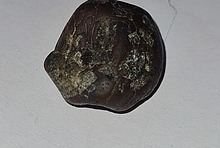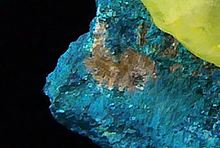Home PageAbout MindatThe Mindat ManualHistory of MindatCopyright StatusWho We AreContact UsAdvertise on Mindat
Donate to MindatCorporate SponsorshipSponsor a PageSponsored PagesMindat AdvertisersAdvertise on Mindat
Learning CenterWhat is a mineral?The most common minerals on earthInformation for EducatorsMindat ArticlesThe ElementsThe Rock H. Currier Digital LibraryGeologic Time
Minerals by PropertiesMinerals by ChemistryAdvanced Locality SearchRandom MineralRandom LocalitySearch by minIDLocalities Near MeSearch ArticlesSearch GlossaryMore Search Options
The Mindat ManualAdd a New PhotoRate PhotosLocality Edit ReportCoordinate Completion ReportAdd Glossary Item
Mining CompaniesStatisticsUsersMineral MuseumsClubs & OrganizationsMineral Shows & EventsThe Mindat DirectoryDevice SettingsThe Mineral Quiz
Photo SearchPhoto GalleriesSearch by ColorNew Photos TodayNew Photos YesterdayMembers' Photo GalleriesPast Photo of the Day GalleryPhotography
╳Discussions
💬 Home🔎 Search📅 LatestGroups
EducationOpen discussion area.Fakes & FraudsOpen discussion area.Field CollectingOpen discussion area.FossilsOpen discussion area.Gems and GemologyOpen discussion area.GeneralOpen discussion area.How to ContributeOpen discussion area.Identity HelpOpen discussion area.Improving Mindat.orgOpen discussion area.LocalitiesOpen discussion area.Lost and Stolen SpecimensOpen discussion area.MarketplaceOpen discussion area.MeteoritesOpen discussion area.Mindat ProductsOpen discussion area.Mineral ExchangesOpen discussion area.Mineral PhotographyOpen discussion area.Mineral ShowsOpen discussion area.Mineralogical ClassificationOpen discussion area.Mineralogy CourseOpen discussion area.MineralsOpen discussion area.Minerals and MuseumsOpen discussion area.PhotosOpen discussion area.Techniques for CollectorsOpen discussion area.The Rock H. Currier Digital LibraryOpen discussion area.UV MineralsOpen discussion area.Recent Images in Discussions
Improving Mindat.orgConnelite from Sardinia
8th Sep 2011 01:55 UTCReiner Mielke Expert

8th Sep 2011 13:32 UTCLefteris Rantos Expert
I would keep my fingers crossed on this. The array of associated secondary Cu-species at Baccu Locci is a very typical environment one would expect to find Connellite. And I assume there has been much collecting and/or research on the locality recently, given that the list of species (and number of photos on mindat) is growing rapidly. So I definitely wouldn't rule out Connellite, even if it's not listed yet!
Also keep in mind that Schmiederite is a rare species, that occurs in specific Se-rich environments. Although the Baccu-Locci Mine is well known for its secondary Se species, i suspect that these specimens are from a sulfate association, forming directly from the alteration of Cu sulfides (for example, see http://www.mindat.org/photo-283723.html ).
Moreover, all the photos of Connellite from the locality actually look very typical for the species, with sprays of deep electric-blue glassy xls, with tapering needle-like terminations. Schmiederite is typically a lighter sky-blue, with a silky fibrous habit (although some are indeed a brighter blue).
Finally, I suspect that some "Schmiederites" directly associated with sulfates and with a brighter "linarite-blue" color (including some specimens from Baccu Locci), might actually represent an intermediate member in the Linarite-Schmiederite system, possibly the relatively new species Munakataite. These two are examples of what I have in mind: http://www.mindat.org/photo-313233.html http://www.mindat.org/photo-33800.html
Although this is just an assumption not backed by any data, I think it would be worth some further investigation!
Lefteris.
8th Sep 2011 14:12 UTCDomenico Preite Expert
8th Sep 2011 15:17 UTCUwe Kolitsch Manager
8th Sep 2011 15:27 UTCPeter Haas

8th Sep 2011 16:16 UTCLuigi Chiappino Expert
for me this foto regarding schmiederite or linarite and not connellite,
connellite is present to Baccu Locci but is much dark blue
Luigi
8th Sep 2011 16:32 UTCUwe Kolitsch Manager

14th Sep 2011 13:32 UTCPatrice Queneau Expert
14th Sep 2011 18:32 UTCUwe Kolitsch Manager




Mindat.org is an outreach project of the Hudson Institute of Mineralogy, a 501(c)(3) not-for-profit organization.
Copyright © mindat.org and the Hudson Institute of Mineralogy 1993-2024, except where stated. Most political location boundaries are © OpenStreetMap contributors. Mindat.org relies on the contributions of thousands of members and supporters. Founded in 2000 by Jolyon Ralph.
Privacy Policy - Terms & Conditions - Contact Us / DMCA issues - Report a bug/vulnerability Current server date and time: April 18, 2024 12:01:47
Copyright © mindat.org and the Hudson Institute of Mineralogy 1993-2024, except where stated. Most political location boundaries are © OpenStreetMap contributors. Mindat.org relies on the contributions of thousands of members and supporters. Founded in 2000 by Jolyon Ralph.
Privacy Policy - Terms & Conditions - Contact Us / DMCA issues - Report a bug/vulnerability Current server date and time: April 18, 2024 12:01:47











